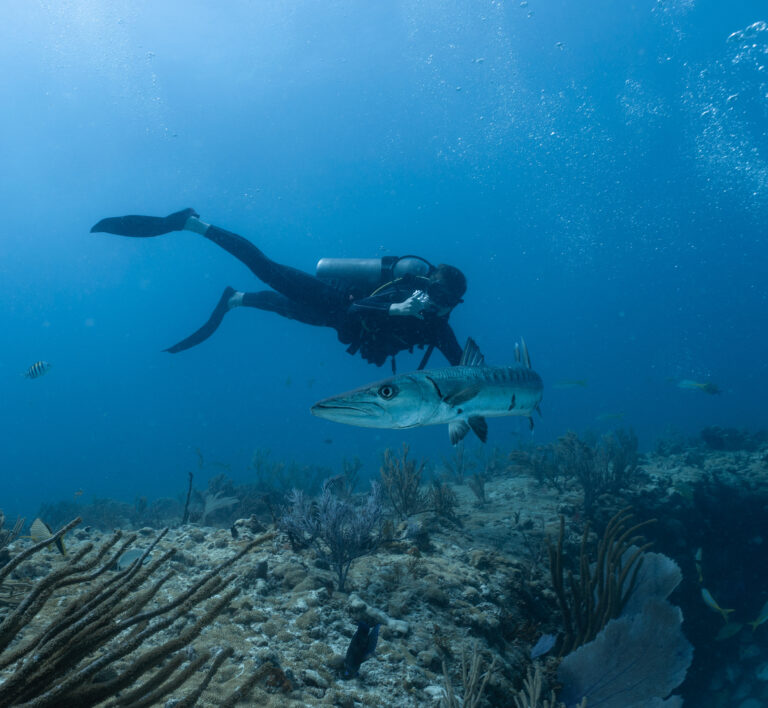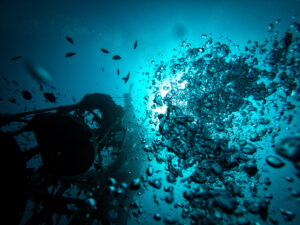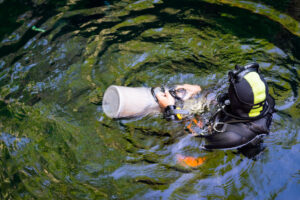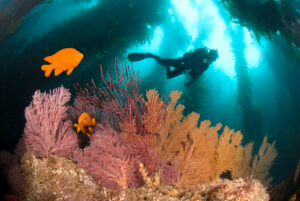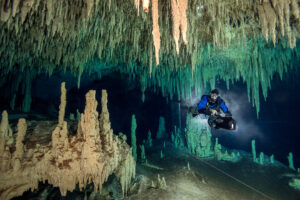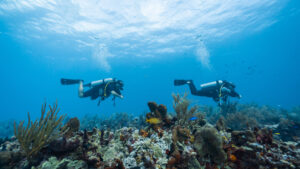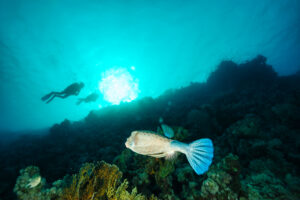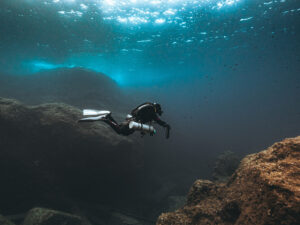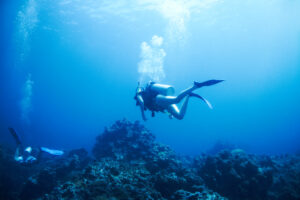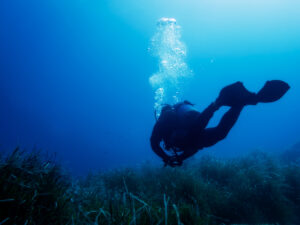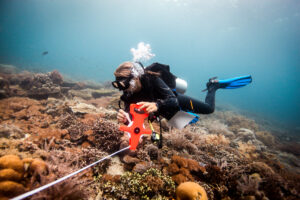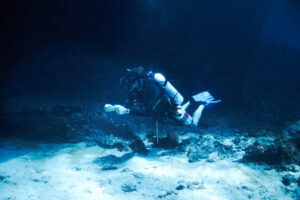What is Ambient Pressure in Scuba Diving?
Ambient pressure plays a critical role in scuba diving and understanding its effects on the human body is essential for divers’ safety and enjoyment. This entry explores the concept of ambient pressure, its sources, implications for dive planning, and how it influences dive physiology and equipment.
Ambient pressure refers to the pressure exerted by the surrounding environment on a particular object or point. On land, this pressure predominantly comes from the weight of the Earth’s atmosphere, while at depth, it is derived from the combined weight of the water column and the atmosphere. It is essential for divers to understand ambient pressure because it directly affects buoyancy, gas consumption, decompression, and dive physiology.
Atmospheric Pressure
At sea level, the Earth’s atmosphere exerts a pressure of approximately 14.7 pounds per square inch (psi) or 1 atmosphere absolute (ATA). This pressure is caused by the weight of the air molecules in the atmosphere, and it decreases with increasing altitude. Atmospheric pressure is typically measured in units such as atmospheres, bars, or millimeters of mercury (mmHg).
Hydrostatic Pressure
As a diver descends into the water, the pressure increases due to the added weight of the water column. This additional pressure is known as hydrostatic pressure, which increases linearly with depth at a rate of approximately 0.445 psi or 0.1 ATA per foot (1 meter) of seawater. Consequently, at 33 feet (10 meters) below the surface, the ambient pressure is approximately 2 ATA, with 1 ATA from the atmosphere and 1 ATA from the water.
Implications for Dive Planning
Ambient pressure significantly impacts dive planning, particularly in relation to the following factors:
Buoyancy
As ambient pressure increases, the volume of an object decreases due to the compressibility of gases. This leads to changes in buoyancy for both the diver and their equipment. To counteract this effect, divers use buoyancy control devices (BCDs) to adjust their buoyancy throughout the dive.
Gas Consumption
With increasing depth, the density of the breathing gas increases proportionally to the ambient pressure. This results in higher gas consumption at greater depths, which divers must consider when planning their dive time and gas supply.
No-Decompression Limits (NDLs) and Decompression
The increased ambient pressure at depth leads to a greater amount of dissolved gases in the diver’s tissues. Divers must follow established NDLs to avoid the need for decompression stops and minimize the risk of decompression sickness.
Nitrogen Narcosis
The increased partial pressure of nitrogen at depth can cause narcotic effects, which can impair a diver’s judgment, coordination, and reaction time. Divers must be aware of this risk and consider it when planning deep dives.
Dive Physiology and Ambient Pressure
Ambient pressure has a profound effect on dive physiology, influencing factors such as:
Gas Laws
The behavior of gases under changing pressure conditions is described by several gas laws, including Boyle’s Law, Charles’s Law, and Dalton’s Law. Understanding these laws helps divers predict and manage gas behavior during their dives.
Ear and Sinus Equalization
The changing ambient pressure during descent and ascent can cause discomfort or even injury to the diver’s ears and sinuses if not properly equalized. Divers must learn proper equalization techniques to avoid complications.
Pulmonary Barotrauma
Rapid ascents can cause overexpansion of the lungs, leading to barotrauma. Divers must ascend slowly and exhale continuously to prevent this injury.
Dive Equipment and Ambient Pressure
Ambient pressure also affects dive equipment, including:
Regulators
Scuba regulators are designed to deliver breathing gas to the diver at the same pressure as the surrounding water (ambient pressure). This ensures comfortable breathing at varying depths. Regulators are typically composed of a first stage, which reduces the high-pressure gas from the cylinder to an intermediate pressure, and a second stage, which further reduces the gas pressure to match the ambient pressure.
Depth Gauges and Dive Computers
Depth gauges and dive computers provide essential information about the diver’s depth and ambient pressure during a dive. This data helps divers maintain their planned depth, monitor their no-decompression limits, and adhere to safety stops or decompression requirements.
Submersible Pressure Gauges (SPGs)
SPGs are used to monitor the gas pressure remaining in a diver’s cylinder. As the pressure in the cylinder decreases, the pressure indicated on the gauge drops as well. This helps divers keep track of their gas supply and manage their ascent, safety stops, and surface intervals.
Drysuits
Drysuits, which are designed to keep divers warm and dry during a dive, incorporate seals and a system to add or release gas to adjust for changing ambient pressure. This maintains the suit’s insulation and enables the diver to adjust their buoyancy as needed.
Underwater Housings
Underwater camera and equipment housings are designed to withstand the increased pressure at depth. However, divers must ensure that their equipment is rated for the intended dive depths to avoid housing failure or equipment damage.
Key Takeaways
Understanding ambient pressure is crucial for scuba divers, as it affects their physiology, equipment, and dive planning. By learning about the sources of ambient pressure, divers can better manage their buoyancy, gas consumption, and decompression requirements. Additionally, awareness of the implications of ambient pressure on dive physiology and equipment helps divers mitigate risks and ensure safe and enjoyable dives.

